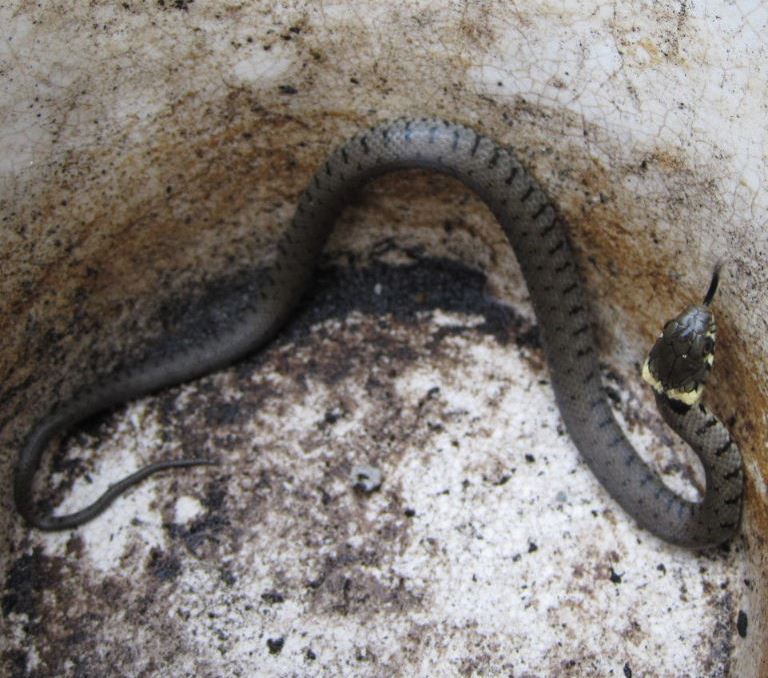Grass Snake (including Barred Grass Snake) Natrix natrix/helvetica


Grass Snake is the usual name for a Eurasian, non-venomous snake with a white or pale yellow collar.
In 2017 the subspecies native to UK and some of Europe (Benelux, France, Switzerland, others)
was split off as N. helvetica. It was re-named the Barred Grass Snake, leaving "Grass Snake" still as
N. natrix and covering much of Scandinavia and Central/Eastern Europe through to Central Asia.



It is also sometimes called the Ringed Snake because of the collar. A black collar follows the pale one.
The name Grass Snake is also used for another species of snake in North America.



In Britain the Barred Grass Snake subspecies N. h. helvetica
is grey (grey-olive, grey-brown) with a pale lemon or white collar, black-striped flanks and a white, mottled underside.
The collar usually has a small break in the centre. Other European subspecies have a continuous collar, a larger break or, in Spain, no collar;
most have mottled rather than striped sides.
 The striped ("Barred") side
The striped ("Barred") side
 The forked tongue
The forked tongue
 The striped side (raiding garden pond for goldfish)
The striped side (raiding garden pond for goldfish)
The Grass Snake (including the Barred) is usually found by or in water. It swims well and its main diet is amphibians or fish.
Where frogs are in decline it will raid garden ponds for ornamental fish.
 Typically reaching some 3 feet (1 metre) length but can be twice that.
Typically reaching some 3 feet (1 metre) length but can be twice that.

 Unlike Adders and Smooth Snakes, Grass Snakes lay leathery, uneven-shaped eggs (above) rather than live young.
Unlike Adders and Smooth Snakes, Grass Snakes lay leathery, uneven-shaped eggs (above) rather than live young.


On the first photo on this page top left, the Barred Grass Snake is setting out towards a Marsh Frog. Above, it encounters the enormous Marsh Frog.
While not a small snake (and they often eat prey much larger than seems possible), the size of the frog seems to put it off the menu.
The second photo on the page, top right, the snake retreats.


The Grass Snake in Kazakhstan, Central Asia, (one of N. natrix subspecies) has a stronger, orange collar and yellow facial stripes.
Photo by Alexandra Makhnina.

